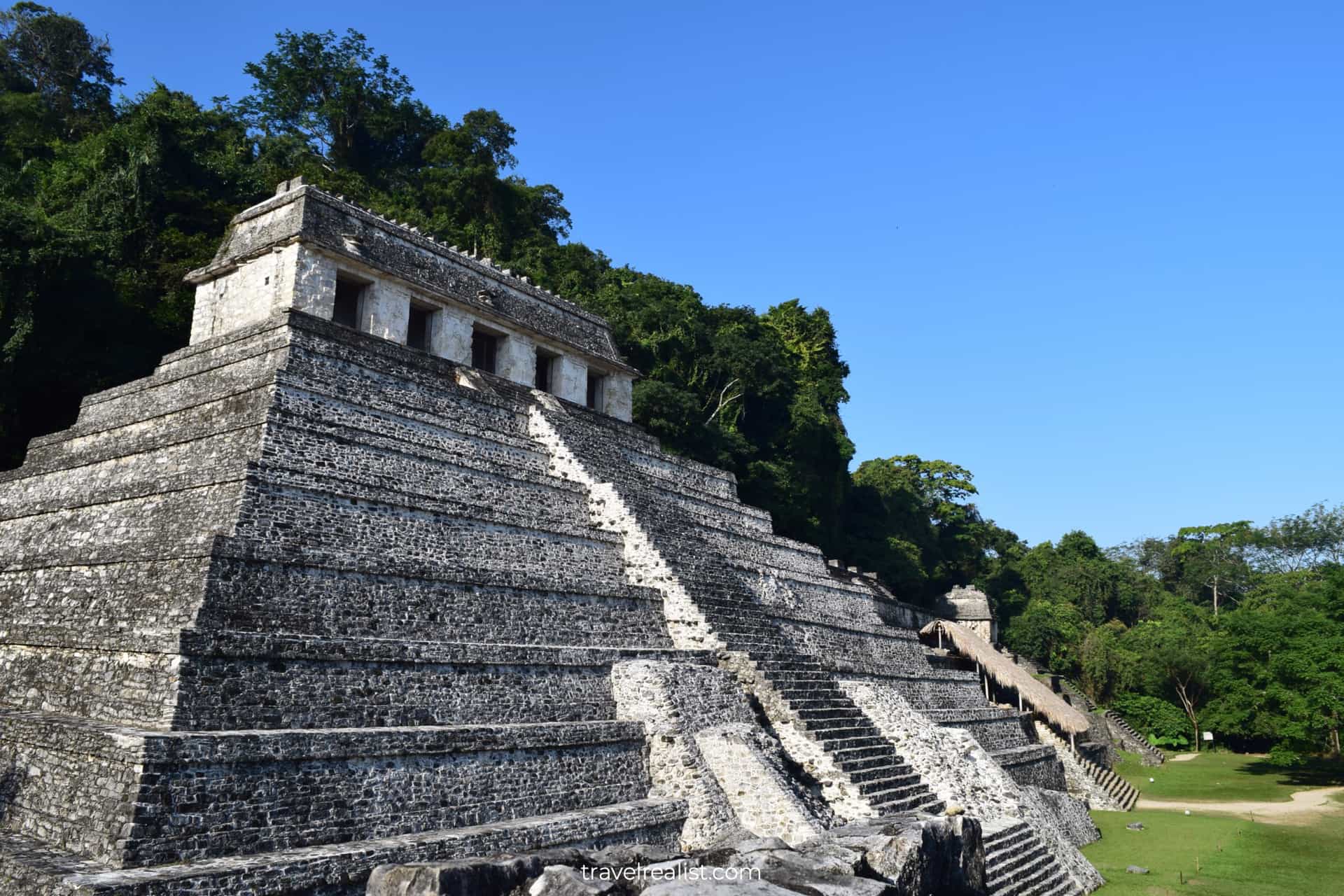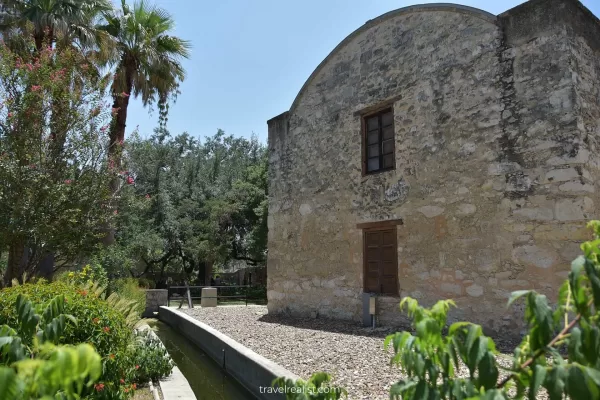Grand Canyon: World’s Most Stunning Erosion Display
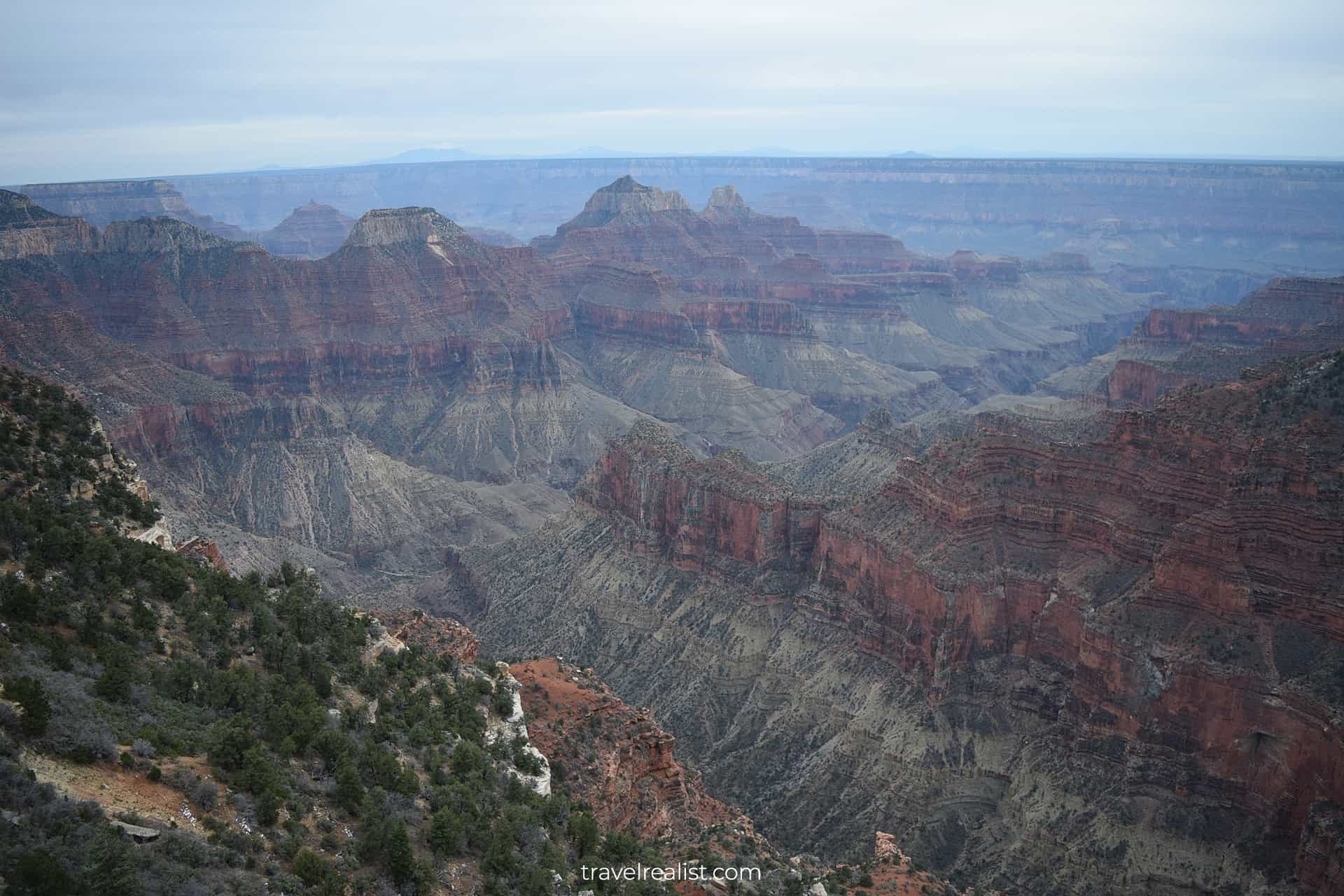
Grand Canyon National Park Guide
Use our realist Grand Canyon Guide to plan your next adventure in this national park. Grand Canyon National Park is one of the most iconic parks in the United States. Recognized as a World Heritage Site, Grand Canyon has been featured in countless movies, series, songs, and books.
We visited Grand Canyon National Park several times. First, during a fall trip of the Southwestern United States and then again during a winter trip of the Western United States.
This post includes affiliate links that will earn us commission if you make a purchase via these links.
Getting to Grand Canyon
Grand Canyon National Park is located in Northern Arizona. There are several parks and monuments that feature Grand Canyon in their name, including Grand Canyon National Park, Grand Canyon-Parashant National Monument, and Grand Canyon West settlement in Hualapai Indian Reservation. The last features the infamous glass Grand Canyon Skywalk and does not honor National Park passes. While both the National Park and the National Monument are managed by the National Park Service, only the park is accessible via paved roads.
Therefore, our Grand Canyon guide focuses on outlining key places of interest in the national park only. Grand Canyon national park has two major areas, South and North Rims. The South Rim is more easily accessible and enjoys significantly higher visitation. It takes about 1.5 hours to reach South Rim from Flagstaff, AZ and 3 hours from Phoenix, AZ. Page, AZ is the closest town with tourist infrastructure to the North Rim.
Where to Stay
Accommodation choices could be surprisingly limited when visiting Grand Canyon National Park. Many hotels in the area were built decades ago yet charge exorbitant rates almost year-round. Your search would likely focus on Flagstaff, AZ, Williams, AZ, and Page, AZ as the closest accommodation options. Consider traveling to Grand Canyon during winter or less popular seasons to optimize your accommodation spend.
Entrance Requirements & Passes
Grand Canyon National Park is open year-round. Yet there are some restrictions. Specifically, the Hermit Road is closed to private vehicles from the beginning of March to the end of November. You would need to take a free shuttle bus to explore that area of the park unless you are visiting during winter. Other areas of the park along the Arizona Highway 64, the Desert View Drive, can be explored from your vehicle regardless of the season. Parking might be sparse when visiting during the major holidays. Therefore, an early arrival is recommended. Grand Canyon National Park honors America the Beautiful Annual Park passes.
Sights & Places of Interest
Grand Canyon is immense and breathtaking. Different layers of red rock showcase what water erosion could do to the landscape during millions of years. The Colorado river that created Grand Canyon is flowing so far below the canyon’s upper surface that it is often hard to see. In a way, Grand Canyon is a larger scale representation of similar processes that created Canyonlands.
North Rim
Our fall visit to Grand Canyon started in the North Rim area of the National Park. Due to its remote location, the North Rim attracts less crowds than the more popular South Rim.
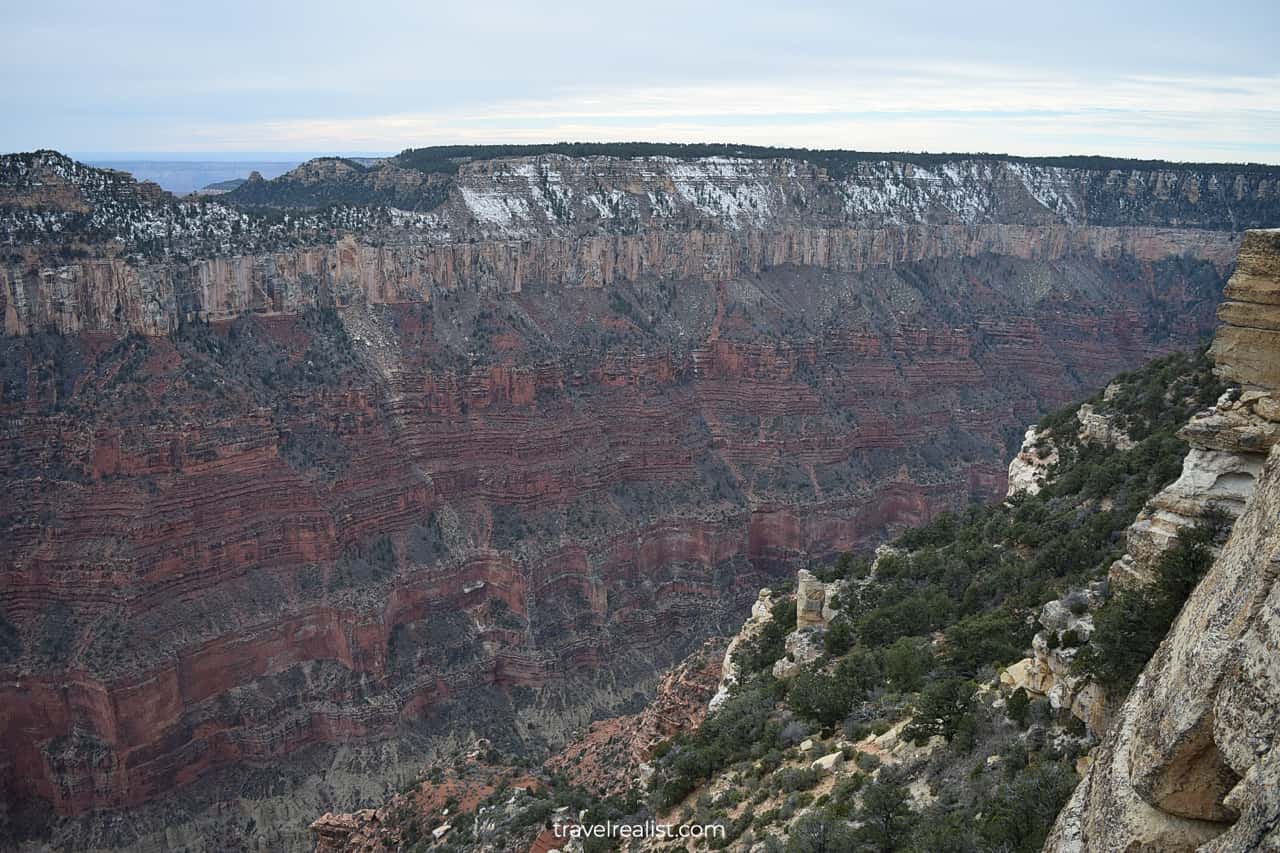
Bright Angel Point
The North Rim features several trails, overlooks, and a scenic drive. It is possible to hike to the Colorado River from the North Kaibab Trailhead. However, the hike to the Bright Angel from the North Rim is significantly longer than from the South Rim. Our time in the North Rim was somewhat limited and we primarily explored the Bright Angel Point and its surrounding areas.
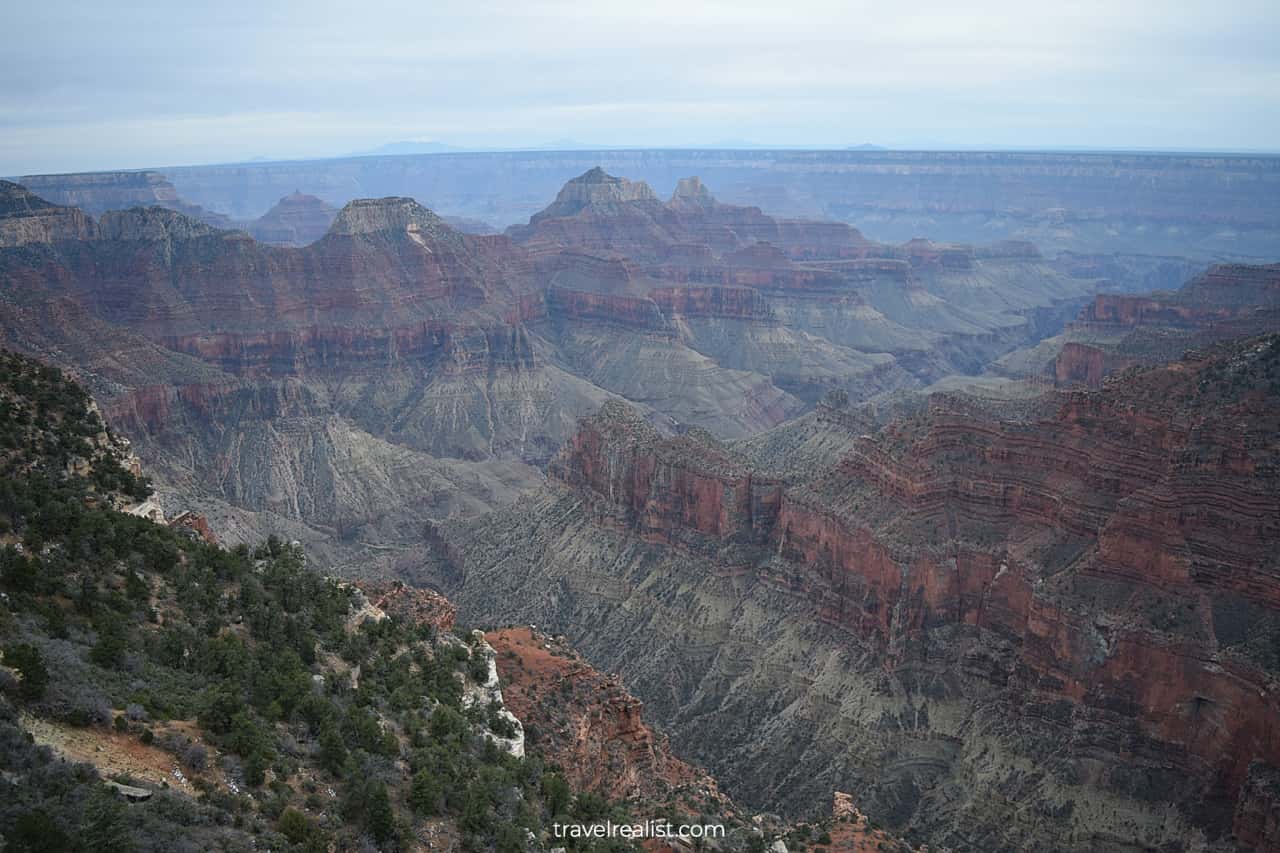
South Rim
The two Rims of Grand Canyon are separated by a long 188-mile (302-km) drive around the Canyon.
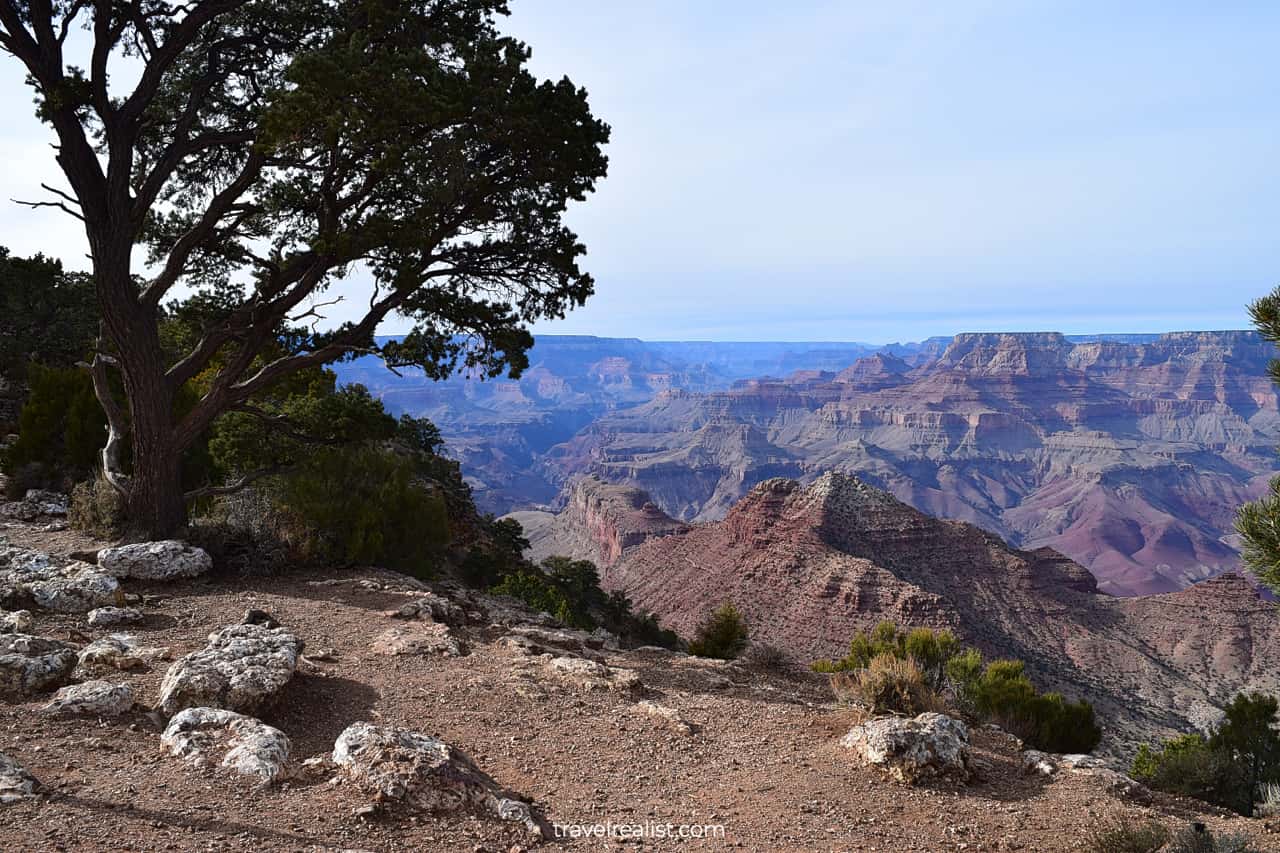
Desert View Watchtower
The Desert View Watchtower is the first overlook in the South Rim area if you enter the park from Cameron, AZ and Page, AZ.
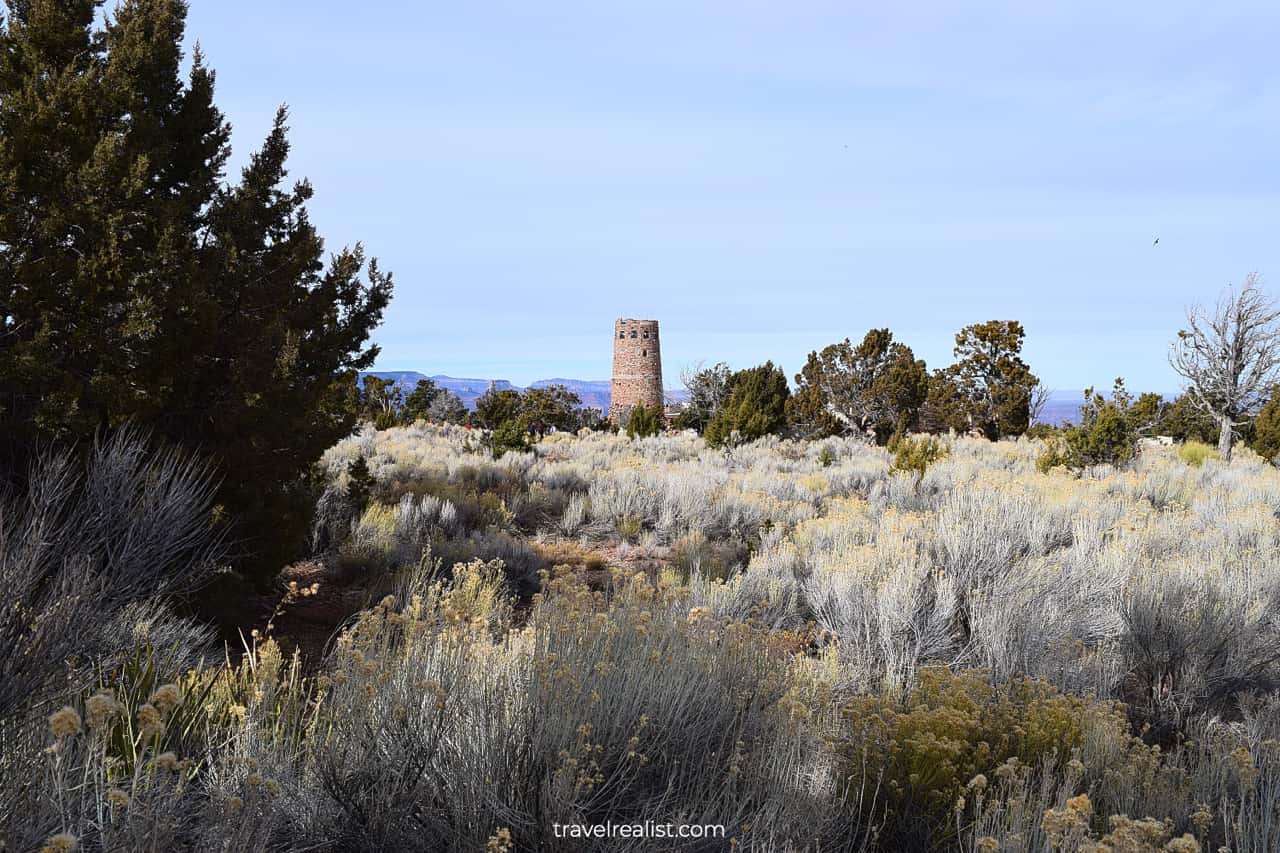
The Watchtower and its surroundings offer fantastic views.
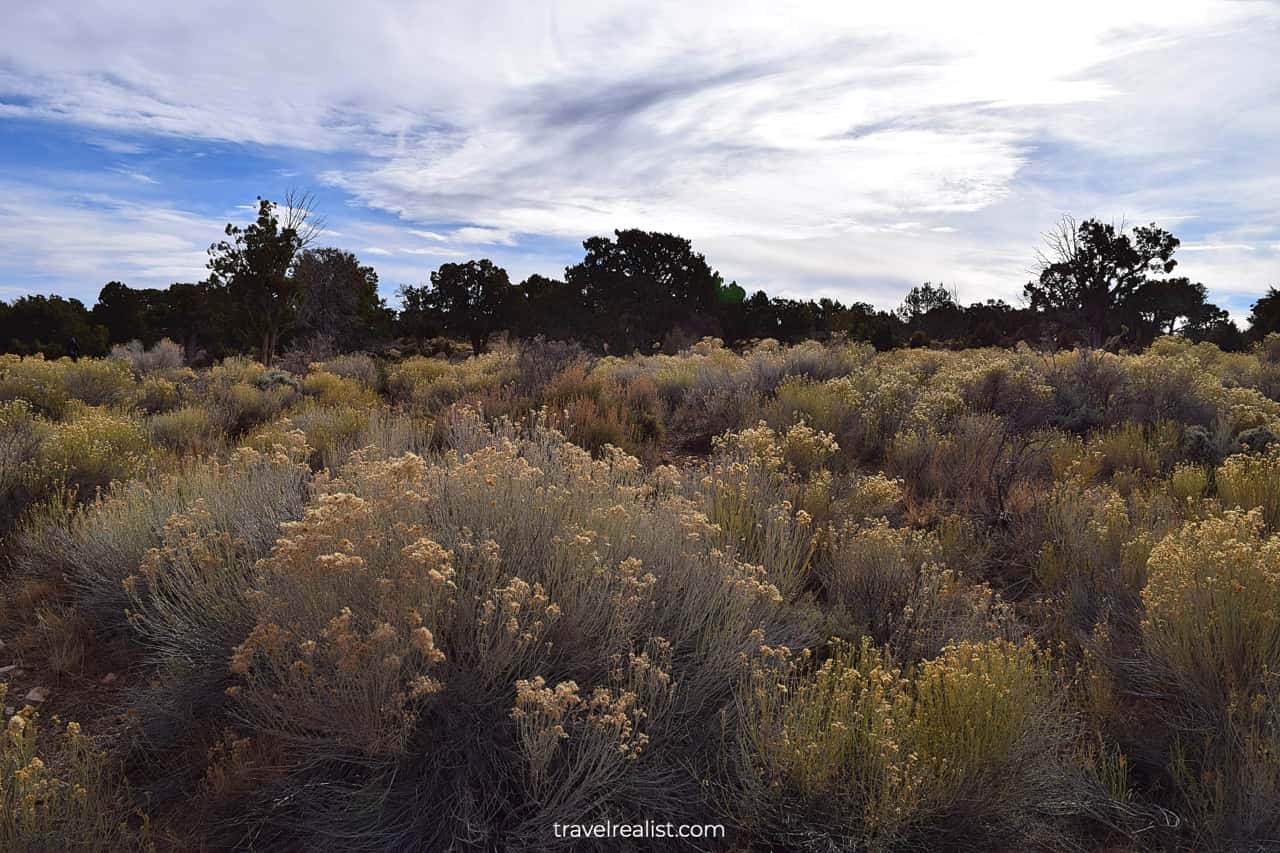
This area is also full of wildlife.

Sometimes, you might see wildlife right on the trail, like this elk. Do not forget to always give animals sufficient space and admire them from a safe distance.
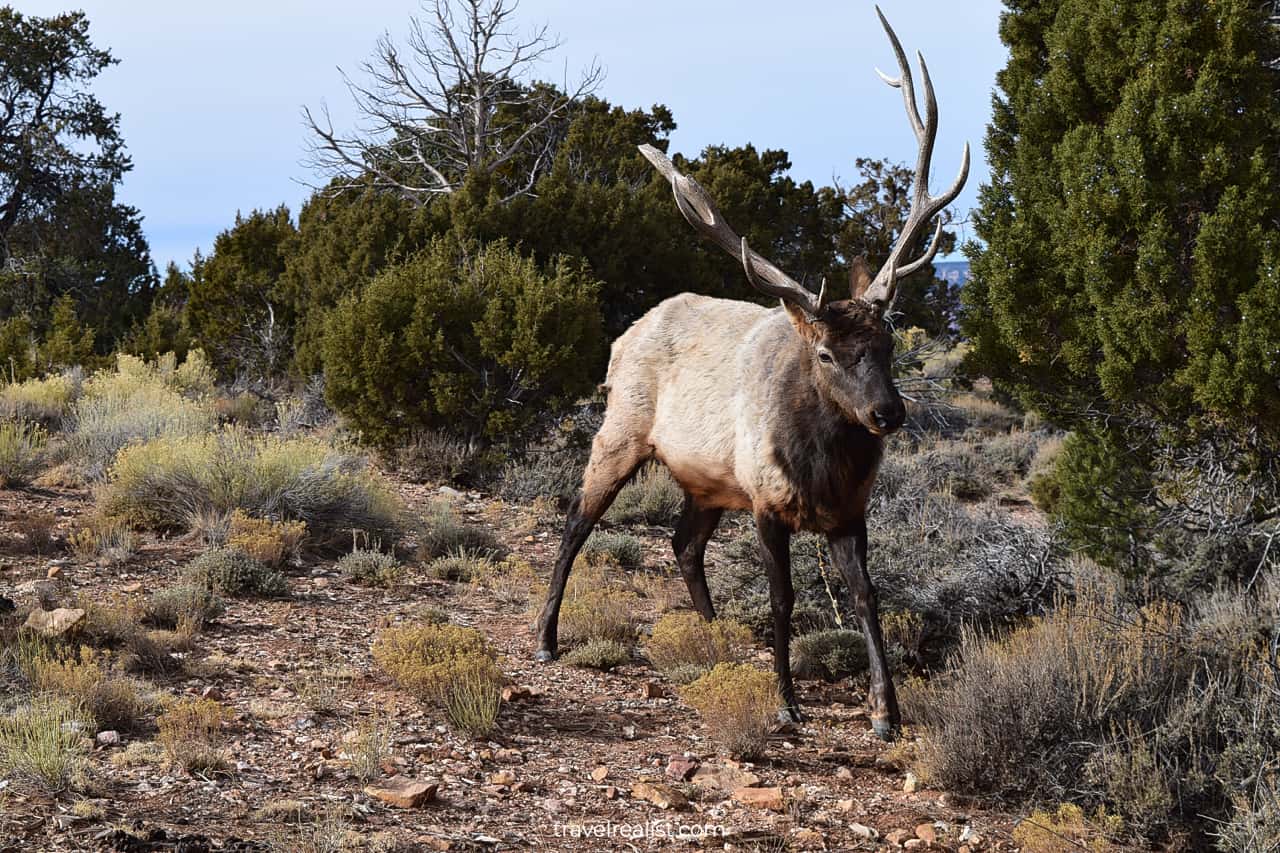
Also beware wildlife encounters while driving. Deer crossings are frequent and often unexpected.
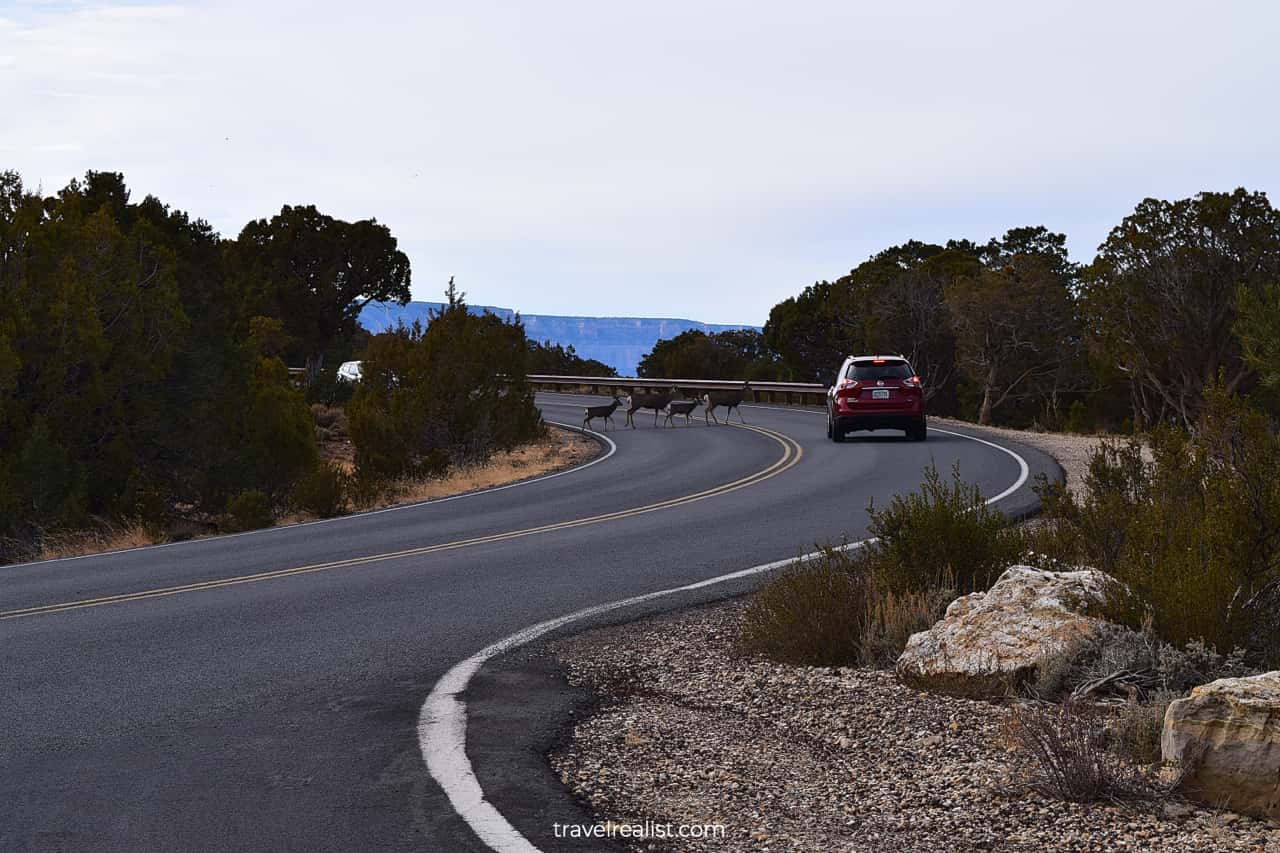
Navajo Point
The Navajo Point is a short drive west from the Desert View Watchtower.
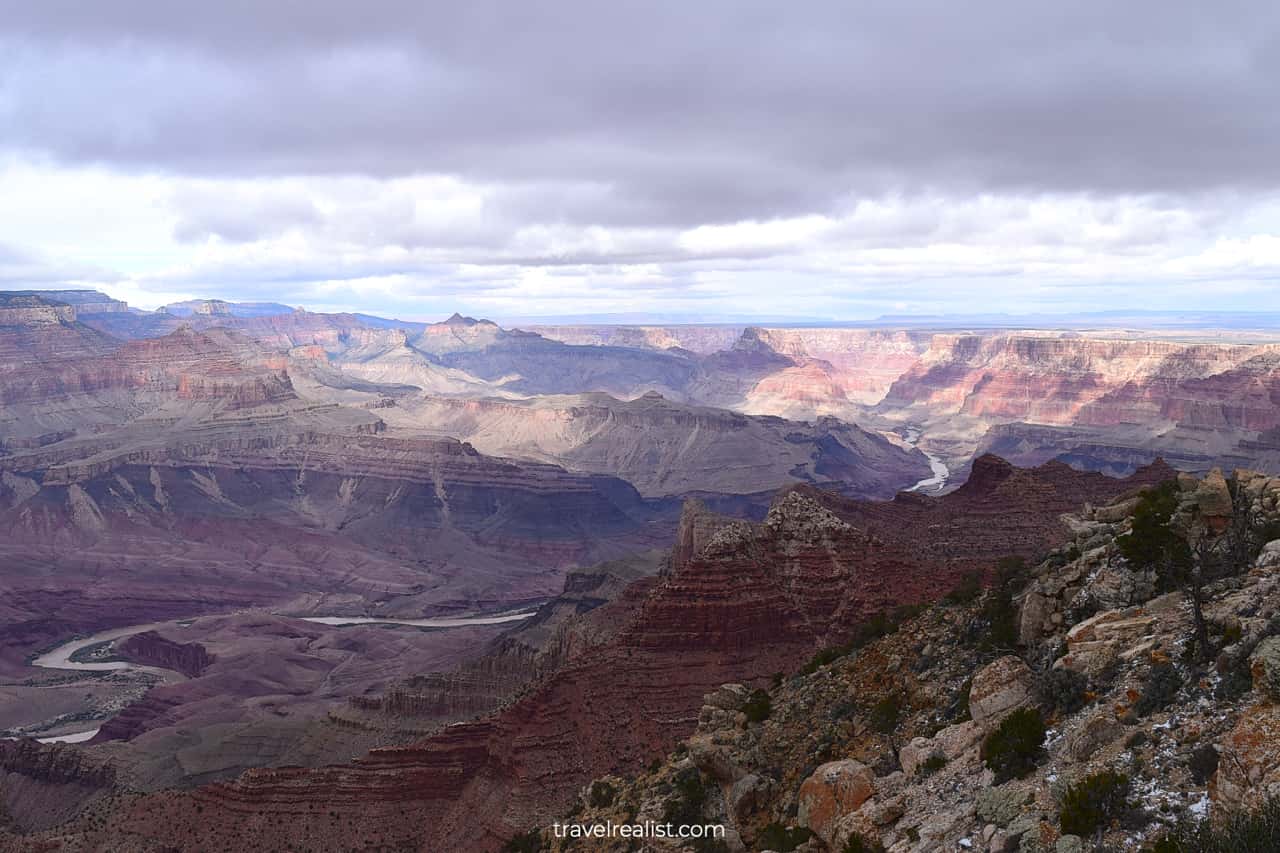
The weather started to turn for the worse right around this point during our fall visit.
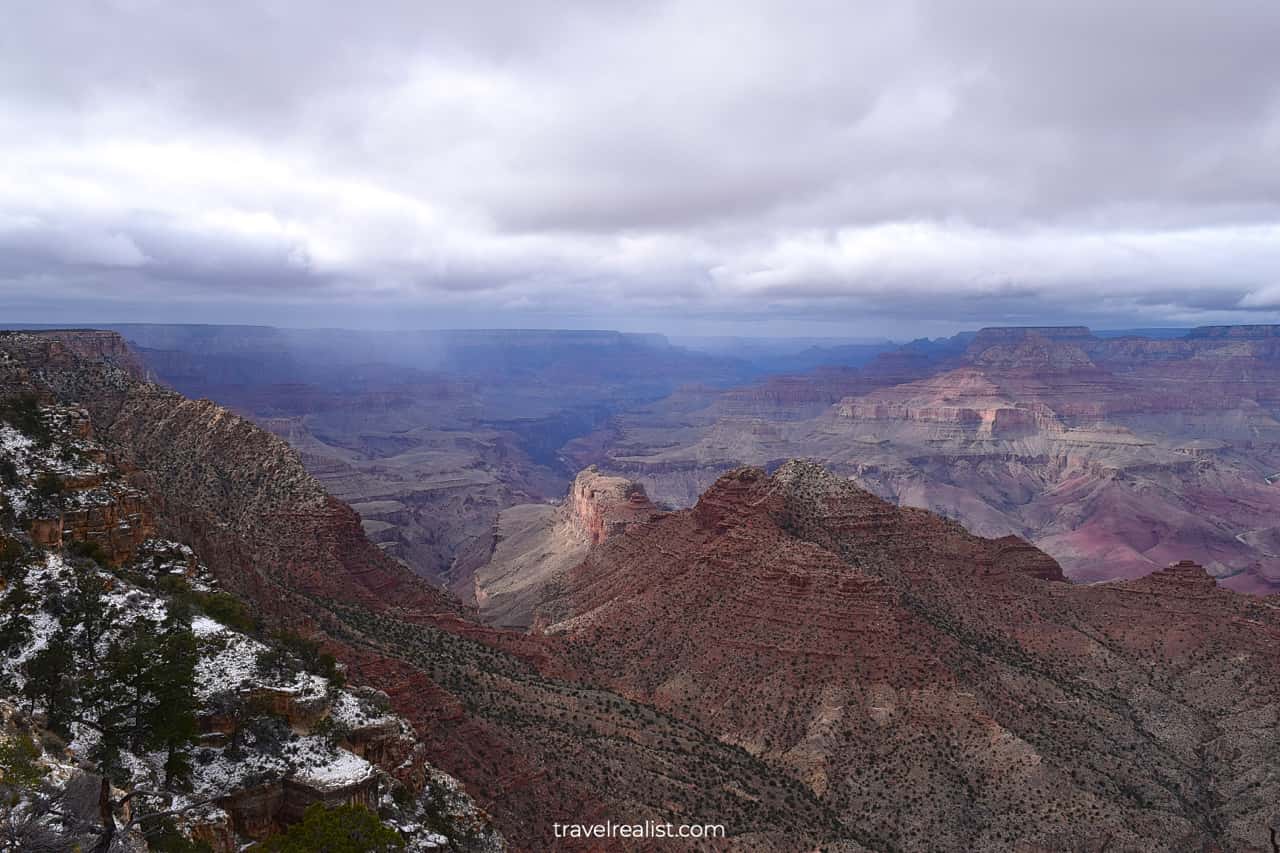
The Navajo Point is a lot more enjoyable in bright sunshine.
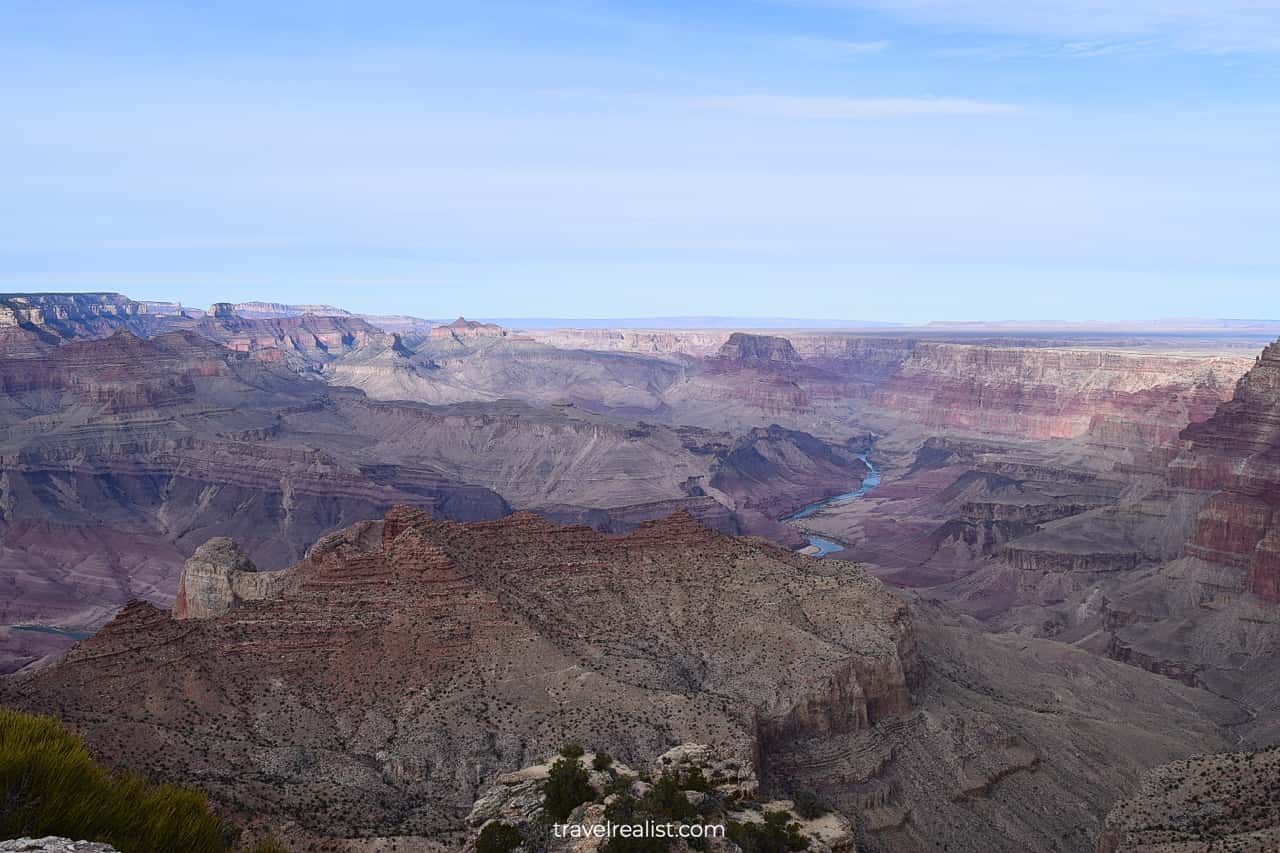
This point offers a clear view of the Colorado river flowing down below.
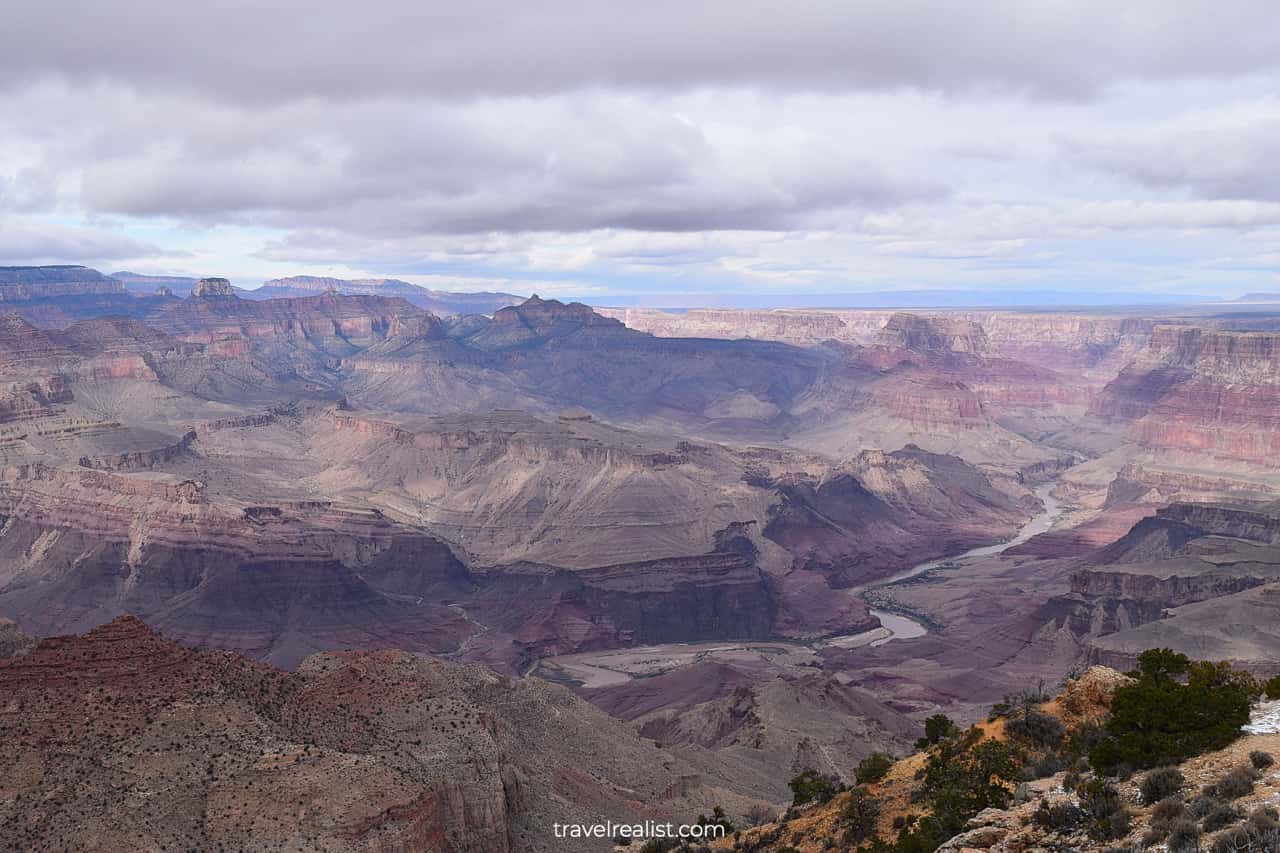
Lipan Point
The Lipan Point, our next stop, provides a view of Grand Canyon at its full glory.
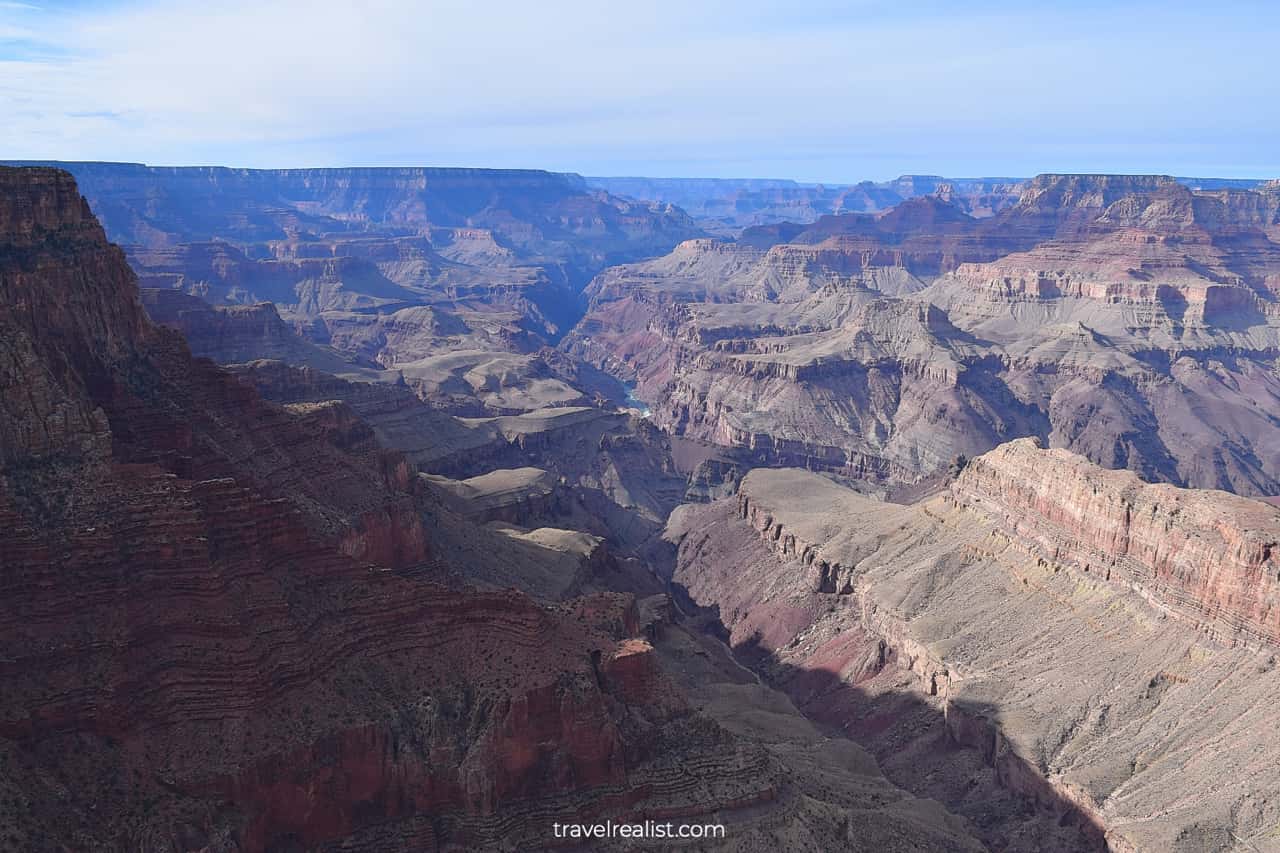
This point is breathtaking in nearly any weather.
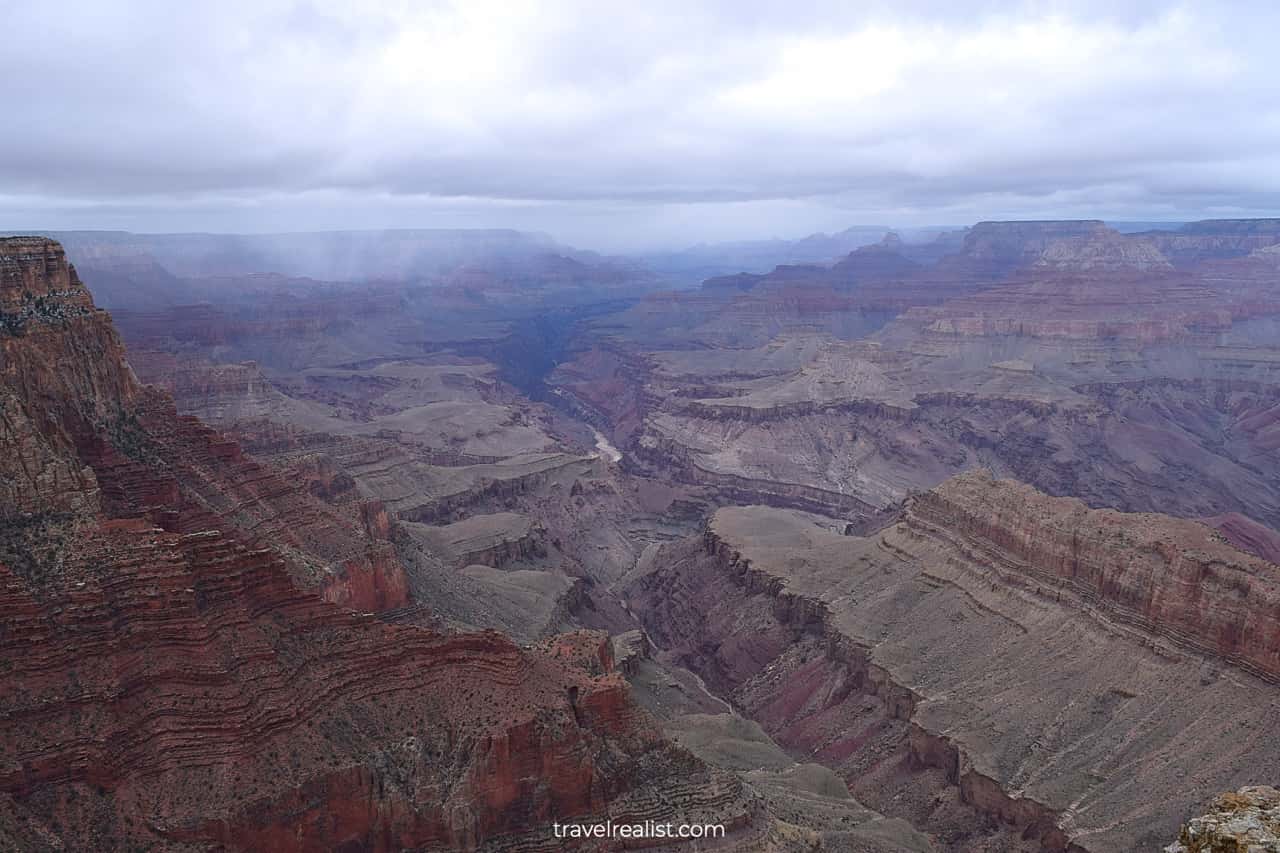
Heavy snowfall might be the only exception to this rule since the visibility drops quickly.
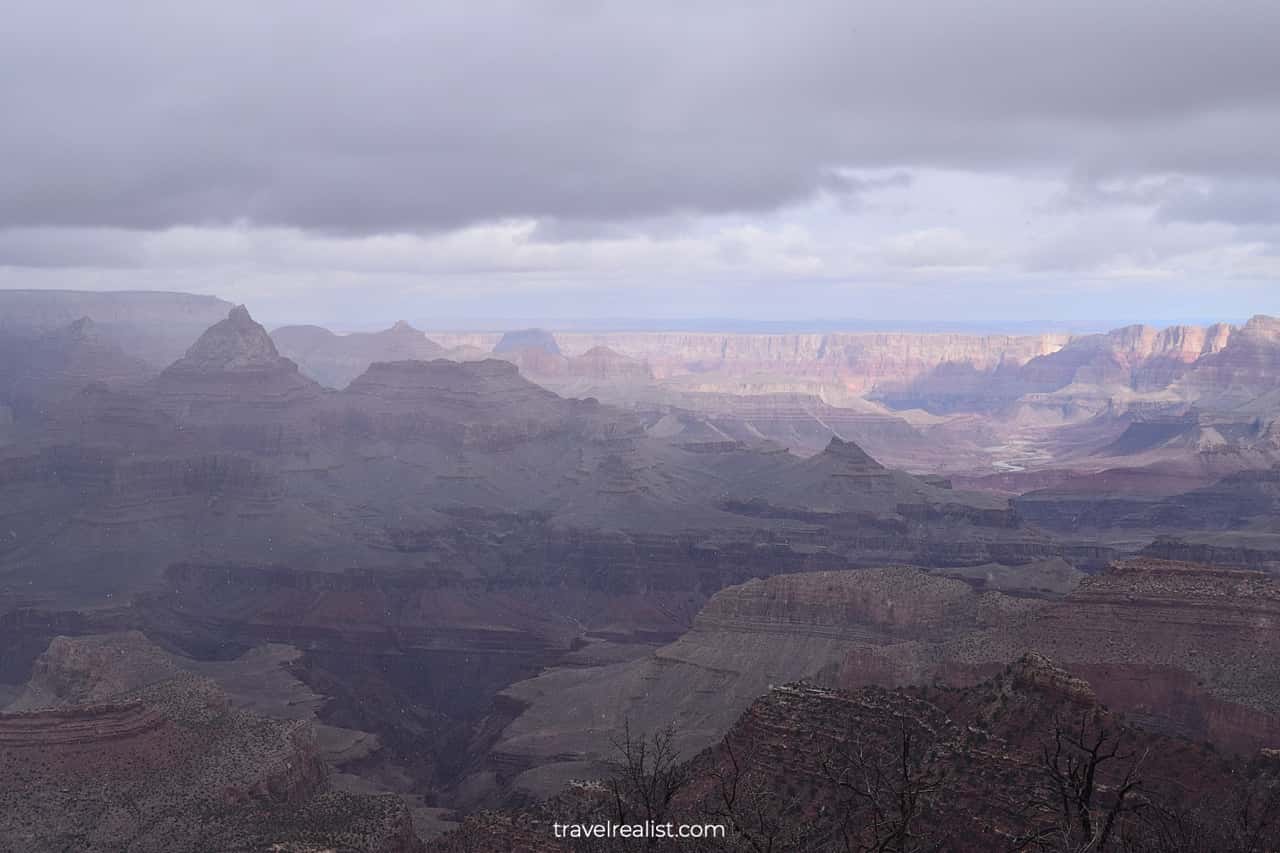
You could enjoy both Rims of Grand Canyon from this overlook during more favorable weather and visibility conditions.

A keen eye could spot ravens circling around this viewpoint.
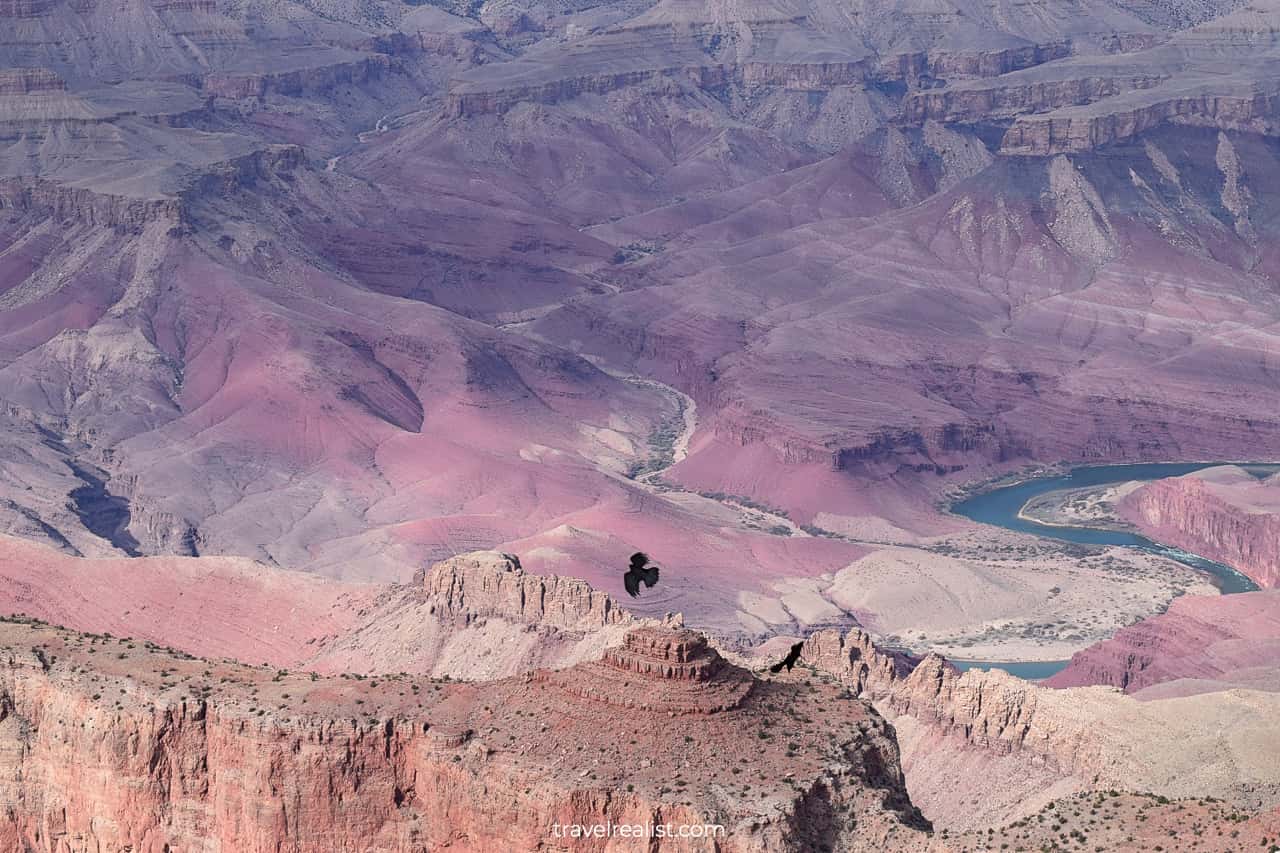
Moran Point
The Moran Point was our next stop in the park.
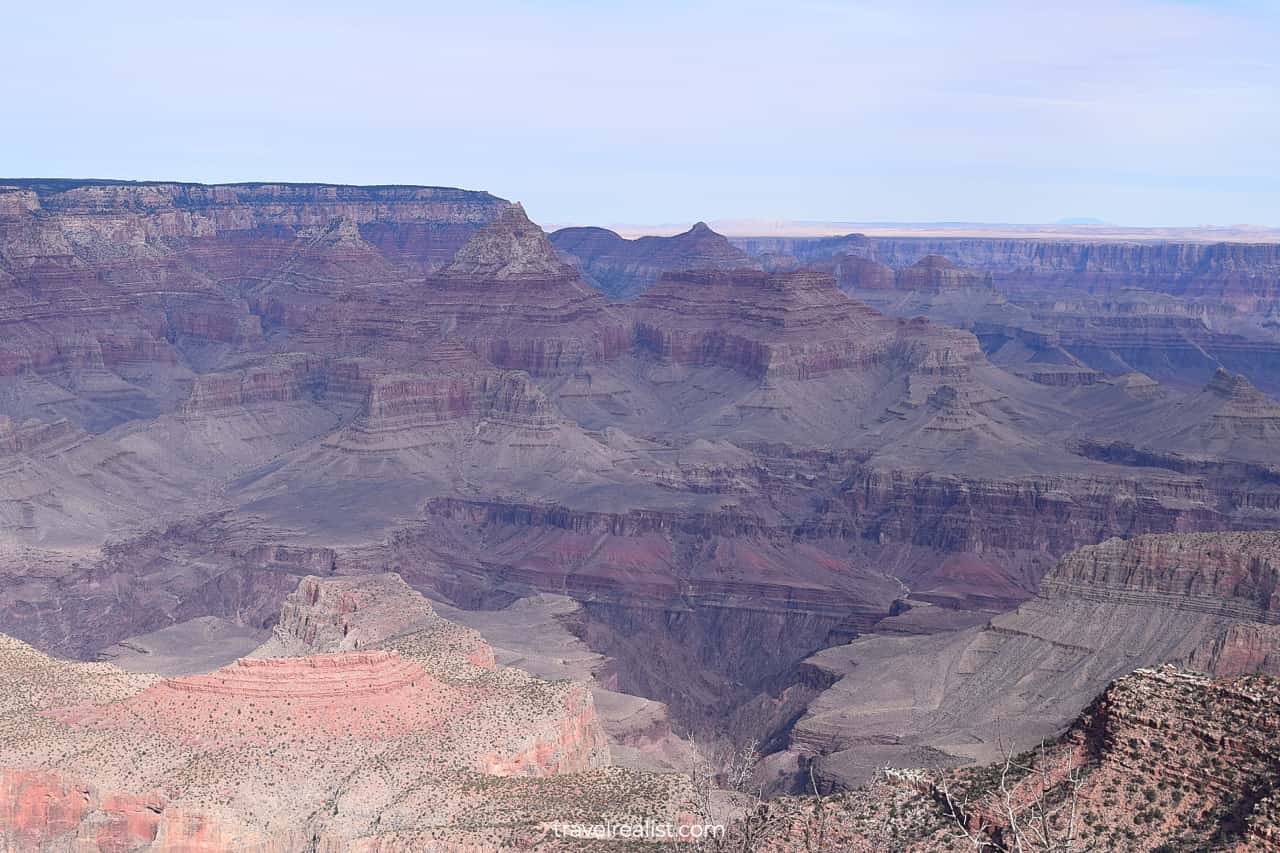
Trailview Overlook
The Hermit Road and the area past the Village are closed to private vehicles from March 1st to November 30th. Therefore, there are a few upsides to visiting Grand Canyon in winter, including beating the crowds and skipping a free shuttle ride.
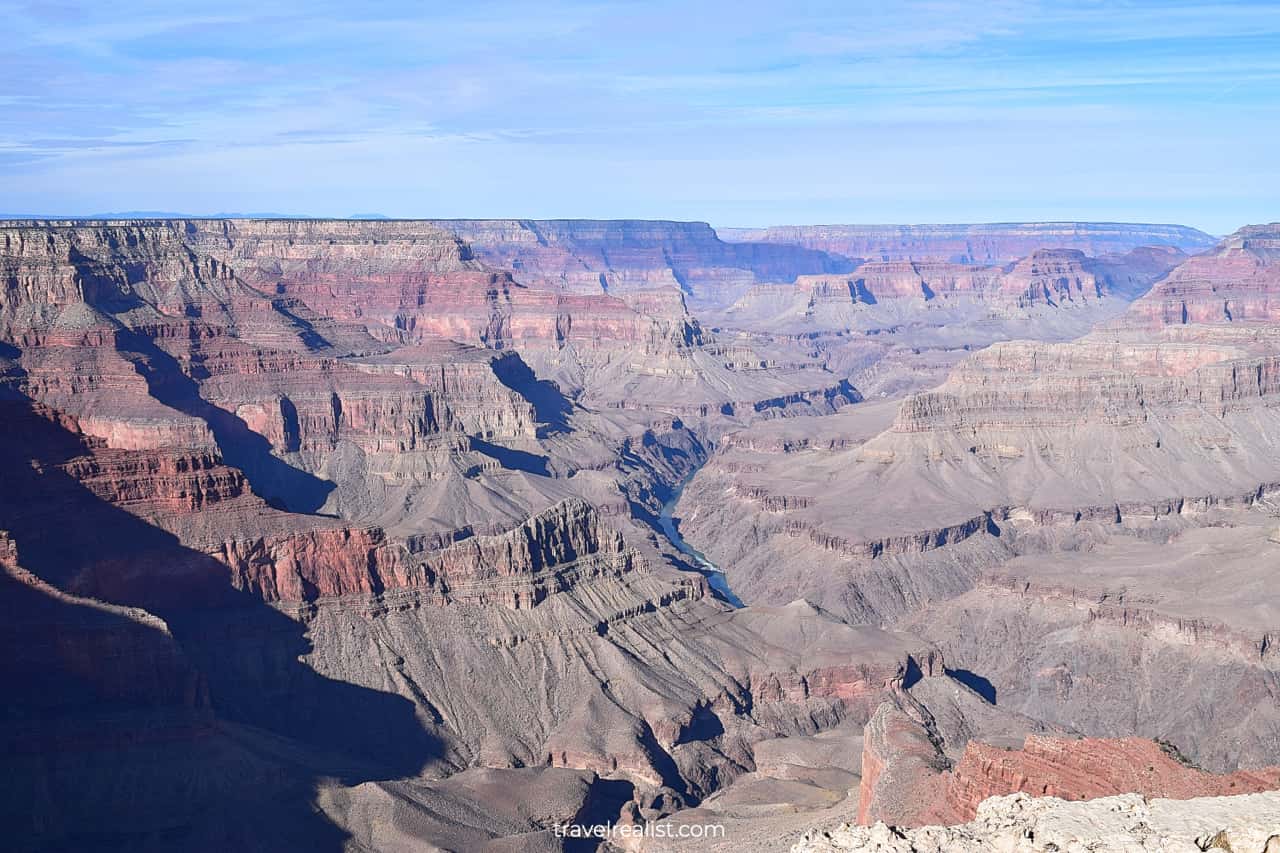
Maricopa Point
The Hermit Road’s viewpoints are picturesque and plentiful, like the Trailview Overlook and the Maricopa Point. However, the views from these points might be a bit less breathtaking than from the overlooks in the Eastern part of the park. Presumably, limited parking and sensitive ecosystem rather than unparalleled views account for this section’s entrance requirements.
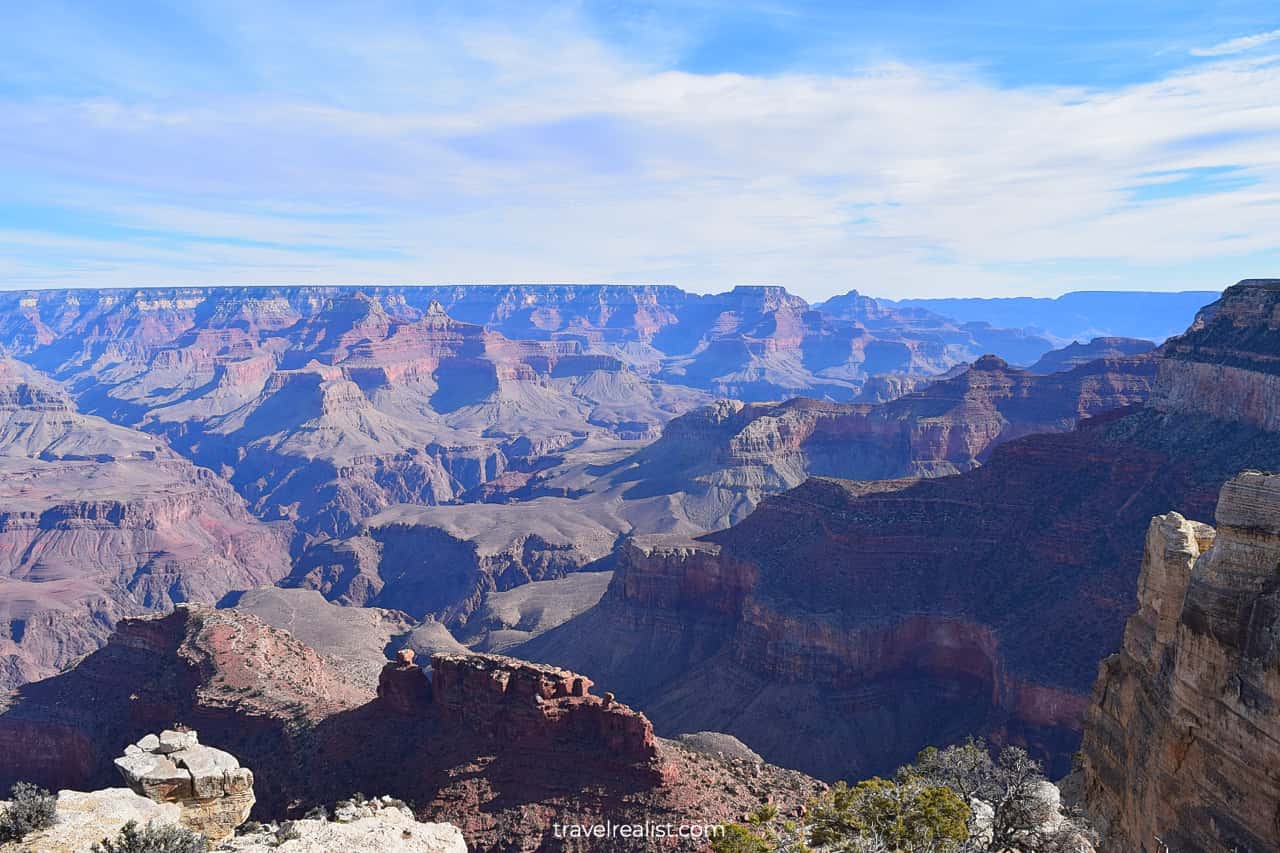
Visiting Grand Canyon National Park in winter also has some disadvantages, mostly caused by unpredictable weather. Make sure to bring warm parka or windproof jacket to enjoy the park during the wintry conditions.
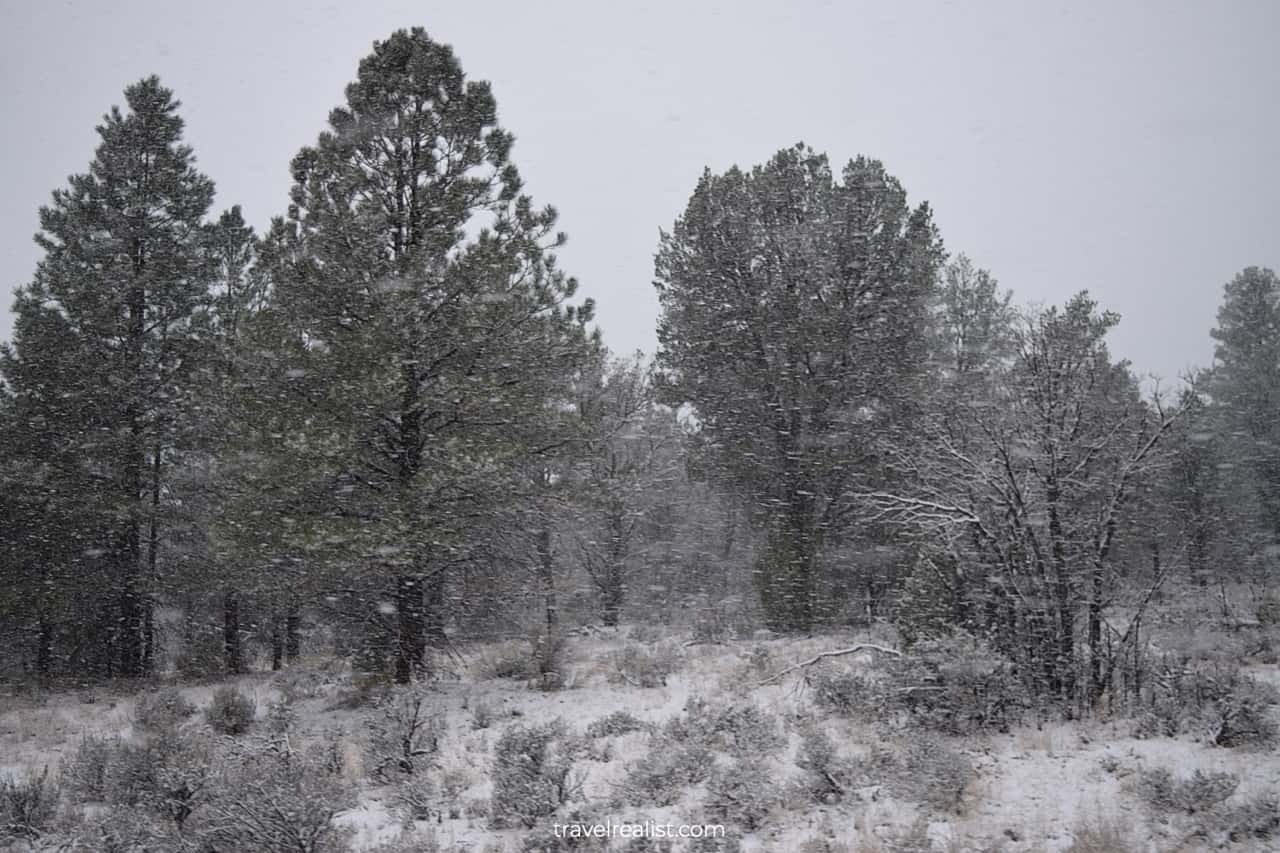
If you happen to encounter a snowfall in the park be prepared for a long and slow drive to any large town. Multiple your expected arrival time by two.
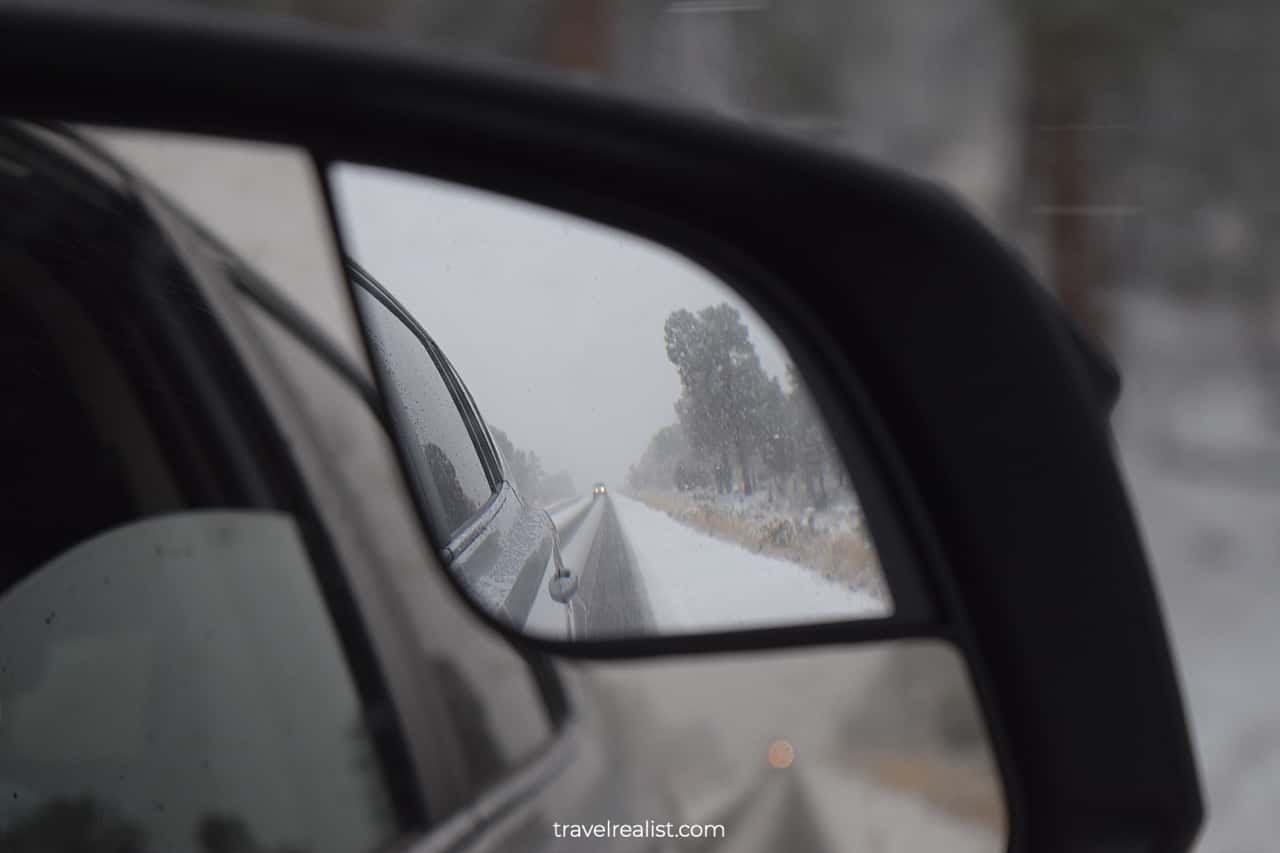
Takeaways: Grand Canyon
Grand Canyon National Park is an American treasure and World heritage. This park features an iconic canyon with a stunning landscape. Consider lowering your expectations slightly prior to visiting this park. The baggage of prior experience with enhanced Grand Canyon visuals in popular culture might bring some disappointment with the park’s crowds, weather conditions, and even real views.
Plan in advance and be strategic about your time of visit to fully enjoy this unique landscape. Exploring the viewpoints and hiking in Arizona’s summer heat is a very strenuous experience. While winters often bring heavy snowfall and winds, you can skip the shuttle ride on the Hermit Road, avoid the summer heat, and beat the shoulder season crowds.
Take a look at our Grand Canyon Video Guide and visit our YouTube channel for the latest videos.
Frequently Asked Questions
Hell’s Canyon in Idaho is almost half a mile deeper than Grand Canyon.
Spring is the best time to visit Grand Canyon National Park in terms of weather. Alternatively, consider visiting the park during winter to secure a better deal on accommodation and avoid summer heat, spring season crowds, and Hermit Road shuttle.
The South Rim area is best for first-time Grand Canyon visitors. Compared to the North Rim, this area is more easily accessible from major towns, has more viewpoints and amenities.
Remote location of Grand Canyon’s North Rim area makes it a good destination to avoid crowds and enjoy longer hikes.
Grand Canyon National Park does not require advance reservations.
Safe realist travels!


